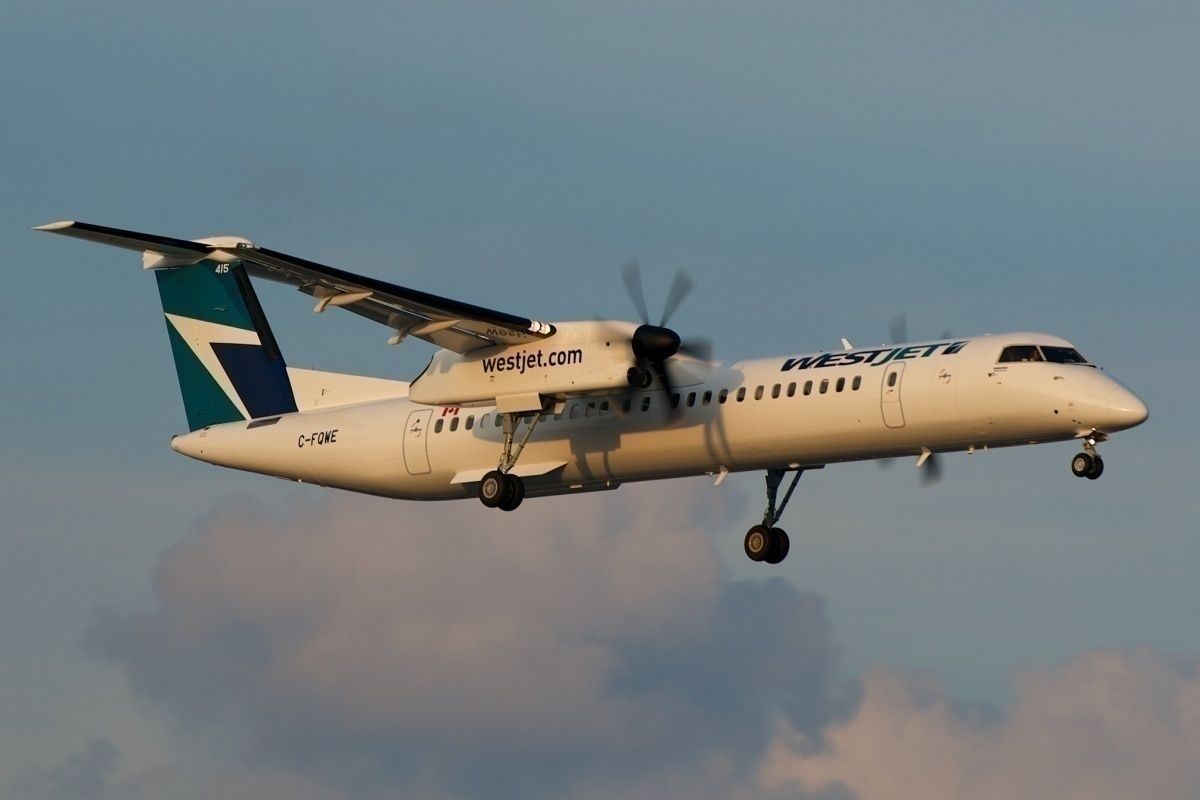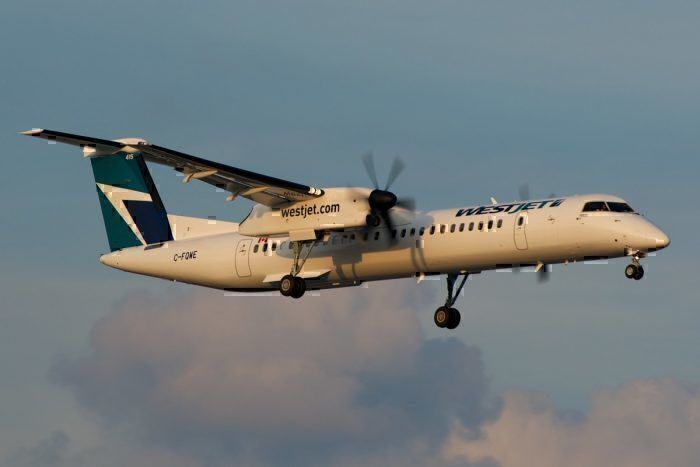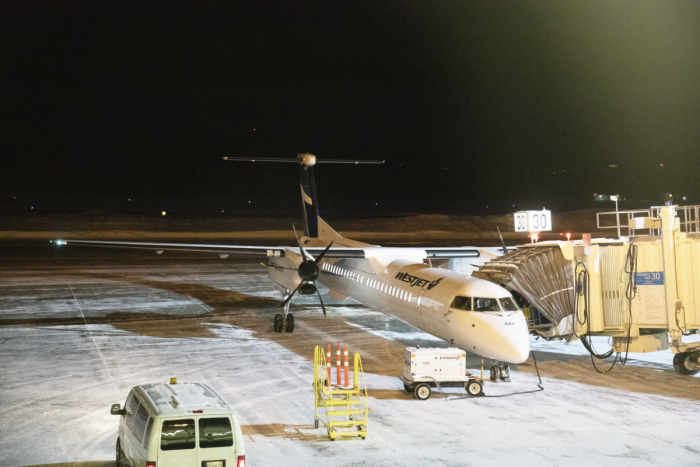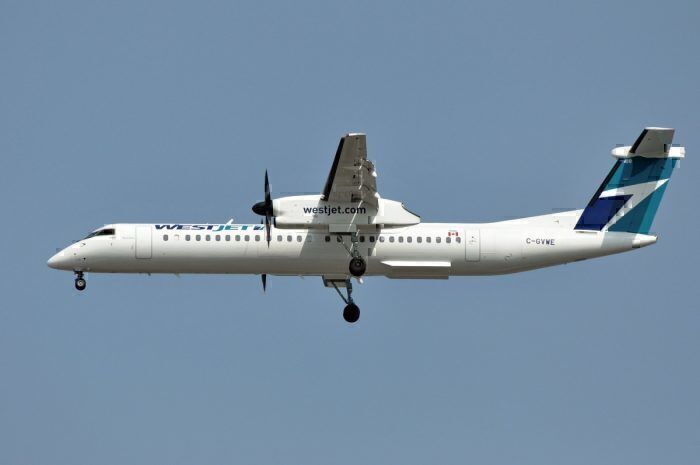Some more details around the diversion of WestJet flight WS-3537 on Saturday 19 October have been revealed. The WestJet Encore de Havilland Dash 8-400 was diverted back to Toronto around 125 nm from the airport.
The Aviation Herald has reported on the diversion of WestJet flight WS-3537 which took place two weeks ago today. According to the FlightAware tracking page for the flight, the 4.7-year-old WestJet de Havilland Dash 8-400 took off from Toronto at 23:27 EDT.
It was due to fly from Toronto to Montreal with 82 passengers on board. When the aircraft was around 125 nm east-northeast of Toronto, flying at FL250, the decision was made to return. Flight WS-3537 arrived back in Toronto at 01:04 EDT. The aircraft landed safely, without injury to the passengers and crew or further damage to the aircraft.
Why did the pilots make the decision to return to Toronto?
Shortly into the flight, it appears the pilots reported a hydraulic failure. This failure could affect a number of vital systems in the aircraft, from flight controls to landing gear and braking systems.
Luckily, the de Havilland Dash 8-400 has four hydraulic systems, in case one or more is damaged or stops operating. There are three main hydraulic systems and an auxiliary hydraulic system, which allows the crew to extend the landing gear manually.
Although details of the hydraulic system failure are unclear, the situation was still deemed serious enough for the crew to declare an emergency.
Upon landing, a leak was observed coming from the aircraft’s right-hand engine by emergency services who were called out to escort the aircraft. Unfortunately, WestJet was not available to respond to Simple Flying’s request for more information on last Friday’s incident.
Hydraulic issues on the de Havilland Dash 8-400
A look back through the incidents list on The Aviation Herald’s website reveals a number of other incidents involving hydraulic systems on de Havilland Dash 8-400s.
Just last month, another Canadian de Havilland Dash 8-400, this time belonging to Jazz Air, suffered a hydraulic system issue. This time it was a result of an input/output processor and no hydraulic fluid was reported to have leaked.
A month prior to that, a Porter Airlines de Havilland Dash 8-400 flying from Timmins to Toronto suffered another hydraulic issue which caused it to divert.
In case you haven’t noticed it yet, there seems to be a definite trend here. In fact, of the 19 listed incidents involving hydraulic issues aboard de Havilland Dash 8-400s since the start of 2017, 12 of these have occurred on aircraft operated by Canadian carriers.
Why are there so many incidents involving hydraulic issues aboard Canadian carriers?
The number of hydraulic issues aboard Canadian de Havilland Dash 8-400s might lead you to believe that there is something unusual going on. In reality, however, the real reason is probably a lot less interesting.
Firstly, the de Havilland Dash 8-400, now known as the Bombardier Dash 8, is built in Canada. Both de Havilland and Bombardier are Canadian manufacturers.
This has meant that the de Havilland Dash 8-400 has become popular among Canadian carriers, not to mention the fact it is a great aircraft for use on smaller-volume regional routes. This means that the majority of de Havilland Dash 8-400s in service around the world are operated by Canadian airlines.
As a result, it is a lot more likely that any incident which does occur involving these aircraft will also take place onboard aircraft operated by Canadian airlines.




